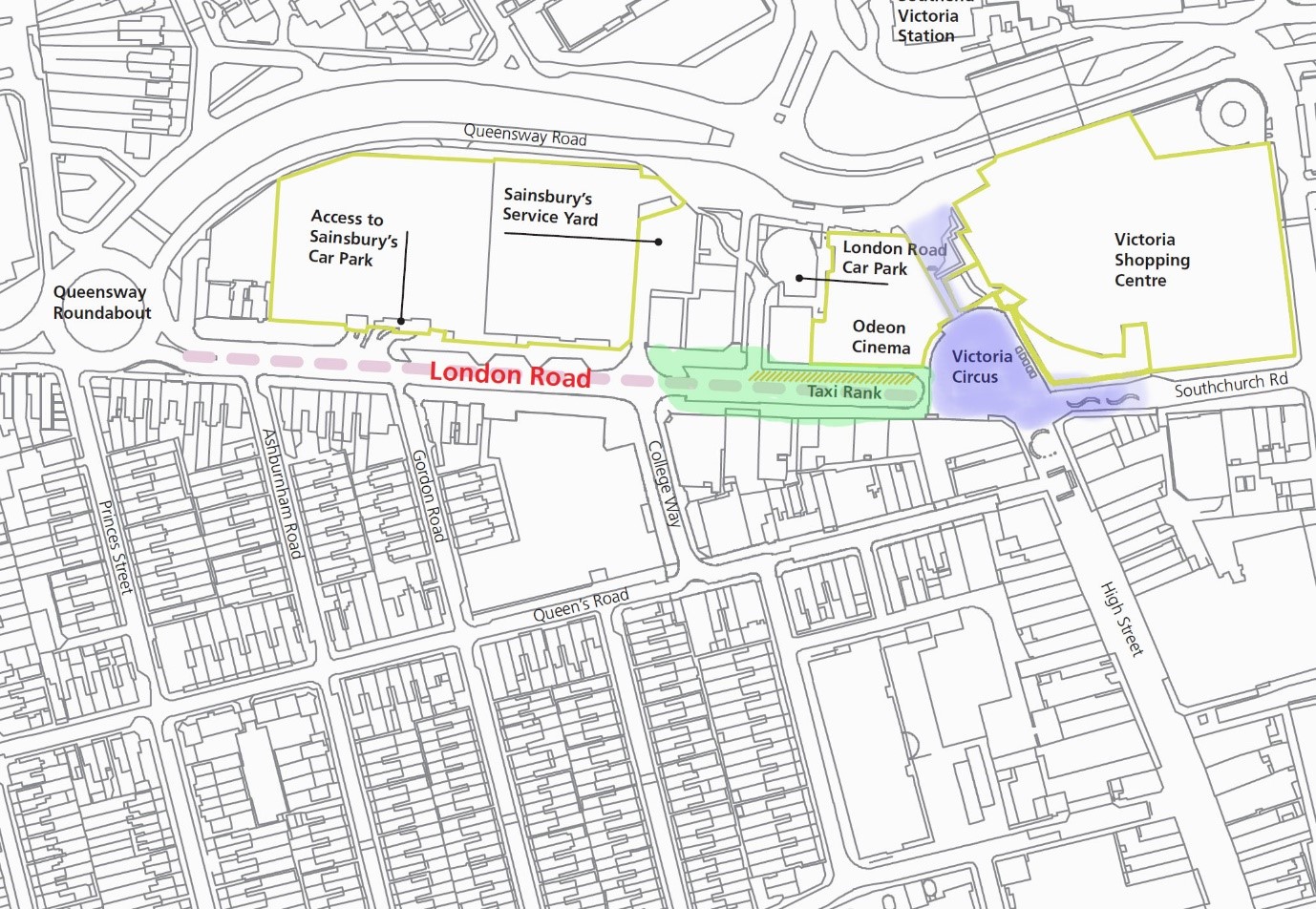Partner in SUNRISE
- Southend-on-sea Borough Council: www.southend.gov.uk

Ambition
Southend-on-Sea aims to find creative solutions to mobility issues in the city centre. It will use temporary street furniture, temporary paint, planters etc. to enable local stakeholders to test co-developed solutions for improving Victoria Circus and London Road (between College Way and Victoria Circus). The results will form the basis for new design solutions that will be implemented as permanent changes by the end of the project.
Southend City Centre’s current situation
The Southend City Centre neighbourhood lies at the heart of Southend-on-sea. It is a dynamic neighbourhood with a mixture of business, residential, demographics and environments. Around 27-30% of the inhabitants in the neighbourhood are economically inactive which includes people who are retired, looking after home/family, long term sick or disabled and students. The neighbourhood is mixed with some affluent areas and some very low-income groups. There is higher percentage of people unemployed in this neighbourhood compared to Southend as a whole. The neighbourhood falls under three Council wards of which 15% of the inhabitants are over the age of 60. However, the proportions of inhabitants over the age of 50 are in certain parts of this neighbourhood is as high as 36-86%.
The neighbourhood falls within one of the most deprived wards in Southend-on-sea and there are efforts being made to regenerate the area. These societal challenges are mirrored in the quality of some of the neighbourhood’s environment.
Recent surveys revealed that walking is the main mode of travel to the City Centre. This includes people coming from different parts of Southend (not just the City Centre Neighbourhood).
Mobility situation
Queensway, London Road, Chichester road and Southchurch road are the four main busy roads that run through neighbourhood and stand as a mental and physical barrier in the neighbourhood. These car dominated carriageways with large volumes and speed of traffic, along with the back facades of buildings and car parks and limited ground level crossing points, fail to provide the atmosphere for community bonds to flourish, for people to travel actively and for the spaces around them to feel welcoming.
Despite the provision of cycle lanes in the area, the level of walking and cycling along these routes are low because the public realm fails to create a pleasant environment that attracts pedestrian and cyclists. There is fear of cycle theft and the limited safe cycle parking in the neighbourhood deters residents from cycling to access various city centre facilities.
Some side streets along the high street do not benefit from having active shop fronts and have tired looking street furniture and poor lighting which causes many to avoid them as walking/cycling routes to the city centre.
Southend’s Local Transport Plan sets out the aims, objectives and a series of policies, together with appropriate monitoring, to deliver transport improvements in Southend from 2011 up to 2026. It has a strong focus on improving walking, cycling and access to public transport.
Anticipated activities in SUNRISE
Strong collaboration between the Council, local and cross border partners (SUNRISE team) as well as active engagement of the stakeholders will be essential for this project. Local resources, knowledge and skill will form the backbone of the implementation to help ensure ownership of the output and community pride.
We will be trailing the concept of ‘Living Labs’ in the context of physical interventions. The Living Lab is co-creation approach integrating research and implementation processes. These are integrated through the co-creation, exploration, experimentation and evaluation of ideas and the active sharing of lessons learnt. In our specific pilot, we will develop a campaign around the implementation of the co-created solutions that helps with their simultaneous application, dissemination and showcase.
We will organise street trial events which will involve the use of a ‘street kit’ (temporary street furniture, temporary paint, planters etc.). This will enable local stakeholders to test the solutions co-developed through participation in the SUNRISE Co-creation Forum and provide feedback and modifications that can shape the proposed design solutions implemented by the end of the project.